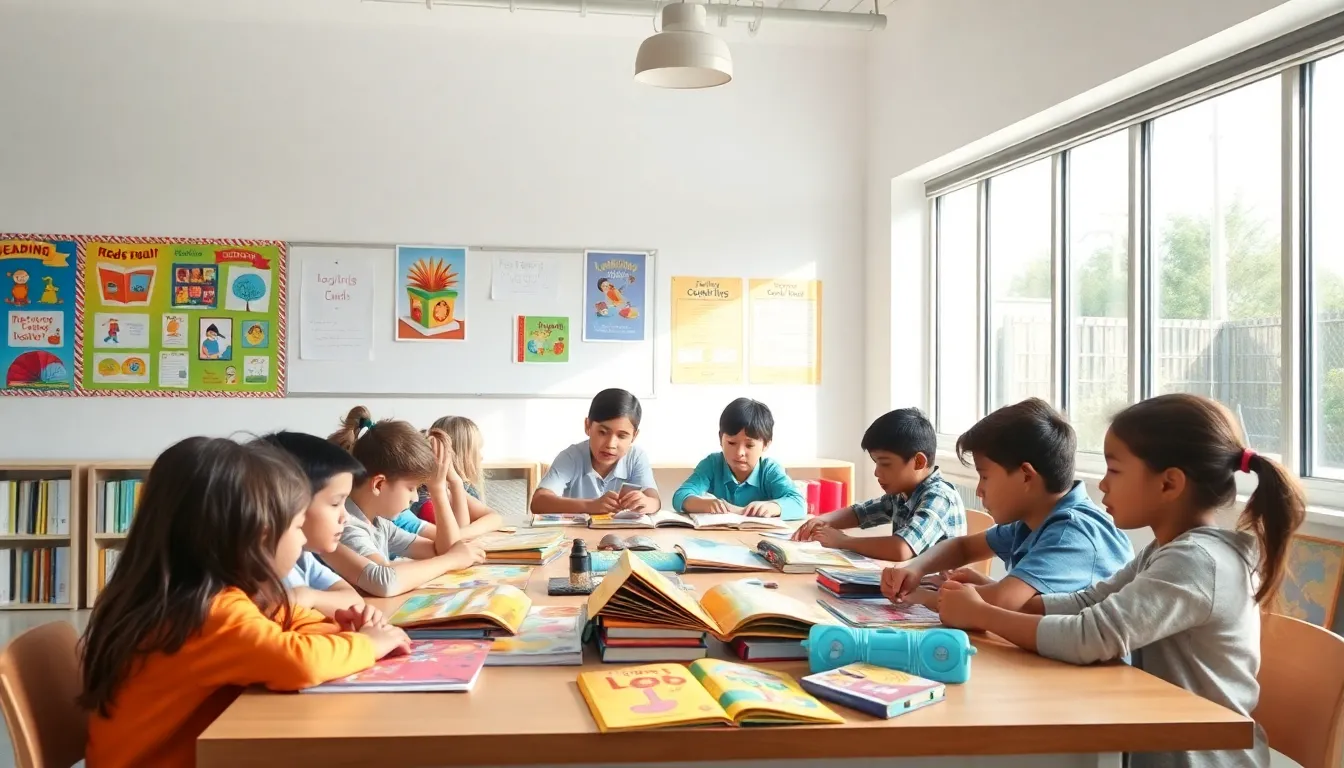In a world where emojis often replace words and TikTok videos reign supreme, the art of reading might seem like a relic from the past. But hold on! Reading and literacy added authorization is here to save the day. It’s not just a fancy term; it’s a game-changer that empowers educators and students alike. Imagine a classroom where every student can unlock the secrets of the written word, transforming them from mere emoji enthusiasts into literary wizards.
Table of Contents
ToggleUnderstanding Reading And Literacy Added Authorization
Reading and literacy added authorization offers a framework for enhancing literacy practices within the classroom. Educators utilize this approach to foster skills that go beyond basic reading and writing. Emphasizing comprehension and critical thinking, this method equips students for real-world challenges.
Students engage with texts in meaningful ways through this authorization. They transition from mere consumers of content to active participants in the learning process. Each lesson integrates various literacy strategies, ensuring that every student can connect with the material.
This concept supports differentiated instruction tailored to diverse learning needs. Educators can assess and address individual student progress, making adjustments accordingly. Formative assessments play a crucial role in gauging understanding and guiding instructional decisions.
Reading and literacy added authorization promotes collaboration among students, allowing them to share insights and perspectives. Collaborative activities encourage discussion and deepen comprehension. Through this social interaction, students develop their writing skills in an authentic context.
Professional development for educators remains integral to the success of this approach. Continuous training updates teachers on the latest literacy strategies and resources. As a result, they can implement best practices effectively in their classrooms.
Research highlights the impact of robust literacy instruction on academic achievement. Studies indicate that students exposed to advanced literacy practices perform better in various subjects. Prioritizing reading and literacy added authorization can lead to significant improvements in student outcomes.
Importance Of Reading And Literacy In Education

Reading and literacy play a critical role in shaping students’ educational journeys. These foundational skills serve as gateways to comprehension and critical thinking.
Benefits For Students
Students gain numerous advantages through enhanced reading and literacy. Improved literacy empowers them to navigate various texts and engage in meaningful discussions. Such skills foster independence in learning, allowing students to approach challenges confidently. Moreover, collaboration among peers enhances understanding and cultivates diverse perspectives. Practical applications of literacy skills in real-world situations help students connect their learning to everyday life.
Impact On Academic Performance
Strong reading and literacy skills correlate directly with academic success. Research indicates that students engaging in robust literacy practices demonstrate improved performance across subjects. Enhanced comprehension skills enable students to grasp complex concepts more effectively. Higher proficiency in reading contributes to better results in standardized assessments and coursework. Exposure to a variety of texts enriches vocabulary and writing abilities, further boosting overall academic achievement. Prioritizing reading and literacy added authorization can significantly elevate student performance during critical educational milestones.
Key Components Of Reading And Literacy Added Authorization
Reading and literacy added authorization involves several critical components. Each contributes significantly to enhancing literacy practices in the classroom environment.
Curriculum Standards
Curriculum standards define the expectations for reading and literacy skills at various grade levels. These standards emphasize the importance of comprehension, critical thinking, and application of literacy skills across subjects. They guide educators in designing effective lesson plans that foster engagement and understanding. Students benefit from curricula that incorporate diverse texts and formats, preparing them for real-world challenges. Explicit connections to literacy practices support the development of these competencies. Alignment with state and national standards ensures consistency in teaching and assessment.
Assessment Strategies
Assessment strategies play a vital role in monitoring student progress in reading and literacy. Formative assessments, including observations and quizzes, allow educators to gauge understanding and adapt instruction accordingly. Feedback provided through various assessments fosters growth and improvements in literacy skills. Summative assessments also evaluate the effectiveness of literacy instruction, offering data to refine teaching methods. Emphasis on collaborative assessments encourages peer interaction, promoting deeper comprehension. Incorporating technology for assessments can enhance engagement and provide immediate feedback, making it easier to track developmental milestones.
Implementation Strategies For Schools
Implementing “reading and literacy added authorization” in schools requires focused strategies that adapt to the needs of both educators and students. Schools must actively invest in teacher training and resource allocation to maximize the effectiveness of this approach.
Teacher Training And Development
Ongoing professional development motivates teachers to adopt innovative literacy practices. Training sessions should emphasize current literacy strategies, offering workshops and seminars led by experts in the field. Collaboration among educators can enhance sharing of successful techniques. Additionally, mentorship programs pair experienced teachers with those new to the practice, providing support in implementing new methodologies. Schools directly benefit when teachers gain confidence in their literacy instruction abilities, leading to improved student outcomes across various subjects.
Resource Allocation
Strategic allocation of resources ensures educators have access to necessary materials for enhancing literacy. Schools should prioritize funding for diverse reading materials that cater to all student interests and reading levels. Technology resources like tablets and interactive software can aid in creating engaging learning environments. Investing in classroom libraries promotes a love of reading among students. Regular evaluations of resource use guide future purchases and align them with evolving educational needs. When schools allocate resources efficiently, they create a robust framework that supports effective literacy practices.
Embracing reading and literacy added authorization is essential for modern education. It not only transforms classrooms but also empowers students to thrive in a rapidly changing world. By focusing on comprehension and critical thinking, this approach equips learners with the skills they need for real-life challenges.
As educators collaborate and adapt their strategies, students become active participants in their learning journeys. The emphasis on professional development ensures that teachers remain at the forefront of effective literacy practices. Ultimately, prioritizing robust literacy instruction leads to improved academic performance and prepares students for future success. Investing in these strategies today will shape the literate citizens of tomorrow.





